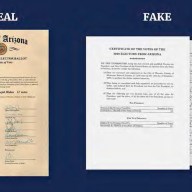St. Francis Xavier University, the small Nova Scotia campus known for its loyal alumni and distinctive school ring, is rethinking one of its less publicized traditions — risking nearly all the money it gets from donors in the stock market.
The unconventional practice, followed by the school with great success for decades, proved disastrous last year when stock prices collapsed and about half the value of the school’s endowment fund was wiped out in a matter of months.
The upshot was the worst performance for a university fund in Canada last year and a reduction of about $1 million in the school’s endowment income. That’s prompted cost-cutting for this September and some soul searching on the part of the university board members about the way they manage donors’ dollars.
“It was huge,” Ramsay Duff, vice-president finance for the school, told the Globe and Mail in summing up the loss.
This time last year — July 6 to be exact — the university hit a high of $100.1 million in its endowment fund, money donors gave to the school to pay for items such as scholarships and academic posts. The market meltdown that followed left the fund with $50.1-million by the end of December, a 43-per-cent drop in value from the start of the year, or about double the average loss for Canadian universities.
The reason: 90 per cent of the endowment was invested in the Canadian stock market with the rest in U.S. equities. Most other universities put an average of 50 per cent invested in stocks.
When markets started tumbling, the university had no protection in the form of bonds or other less risky investments to break the fall.
The university’s unusual approach, which runs counter to common investment practices, has been in place since the endowment was established in the 1960s, said Duff.
“Our board at the time believed that the additional risk of our model was justified by the exceptional returns and the confidence in achieving those returns,” he said.
Over the past 15 years, the university’s investments, managed by a small group of volunteers, have achieved some of the highest returns in Canada, allowing for generous annual payouts.
That winning streak ended last year, and in response the board commissioned a study by external consultants, has cut stock investments by about 15 per cent and plans to reduce them even further. Some of last year’s losses have already been recovered, Duff said, but he would not provide numbers.
St. Francis Xavier also is on the hunt for new members for the volunteer committee that oversees the university’s investments. “A number of them are in their 70s,” Duff said, and the school needs to do some succession planning.
If that search is unsuccessful, he said the university may break with another tradition and hire professional managers, the practice followed by other universities.
Former New Brunswick premier Frank McKenna, a St. Francis Xavier grad and the new chair of its board of governors, said he has not yet been briefed on the issue and will attend his first meeting this fall.
While 2008 was bleak for most endowments because of investment losses, new donations meant that a few universities in Canada managed to break even for the year. Those included Toronto’s Ryerson University and the University of Waterloo. King’s University College at the University of Western Ontario added to its small endowment, because gifts outpaced its investment losses.
Bruce Curwood, a Toronto investment adviser who counts several university endowments among his clients, said 2008 caused many boards to reconsider the risks they were taking.
“I think people were surprised by the magnitude and the velocity of the downturn,” said Curwood, who is a former treasurer of the University of Toronto. “All of us have been looking through rose-coloured glasses. We’re realizing markets are far more unpredictable than we thought.”
















